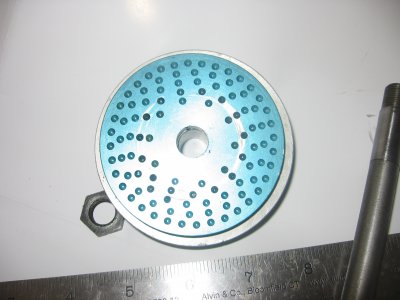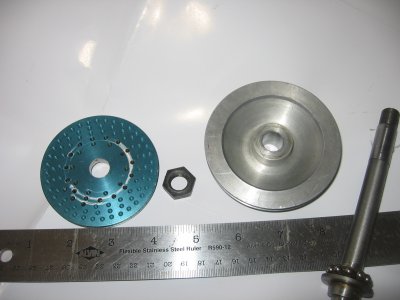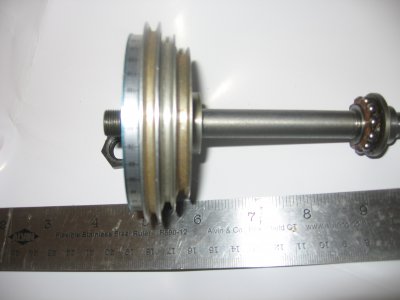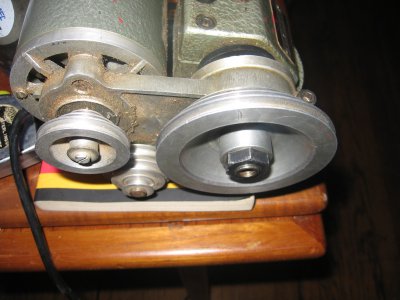- Joined
- Jan 10, 2013
- Messages
- 176
I've finally gotten around to installing a degree wheel and index plate on my Unimat to use it as a light duty spindex, mostly for laying out model parts. The degree wheel was originally part of an animation stand and will fit on the Uniomat pulley, but there is not a lot of material to tap into. I have the center of the blue plate reamed to the bore diameter of the pulley and it is now nicely centered, but the center will have to be bored out to clear the pulley nut. My problem is how to attach the index plate to the pulley- you can see the face of the plate is almost all index holes and there is only a thin rim at the edge where there is metal to drill into. My current thought is to keep the parts centered and drill holes for small diameter roll pins around the rim, then bore out the center for clearance for the nut and pin the parts in place, probably with some adhesive as well. This is a Unimat, so there is not going to be a lot of stress on these parts. This will leave the plate with minimal to no support at the center of the pulley which I don't like in theory, but again there is not a lot of stress on these parts. I could fill the recess in the face of the pully with epoxy putty but I think that would only make me feel better. Does this seem like a valid approach, or does anyone have any better suggestions? I am trying to keep the process simple.








